Pellestrina: a hidden gem in the heart of the Venetian lagoon
Pellestrina island, located in the south of the Venetian lagoon, has been enchanting its visitors for centuries with breathtaking landscapes and picturesque, coloured fishing villages. But that is not all. The island, about 11 kilometres long, also impresses with its small size: its surface area ranges from just 23 metres to just over 1 kilometre and thus shapes the narrowest coastline between the lagoon and the Adriatic.
The beach in Pellestrina
The small Venetian island is popular for its beautiful beach that, surrounded by greenery and coastal dunes, offers visitors an intimate and suggestive natural setting. The beach is indeed characterised by the unspoilt charm of a quiet spot, far from mass tourism and the chaos of bigger and more crowded seaside destinations.
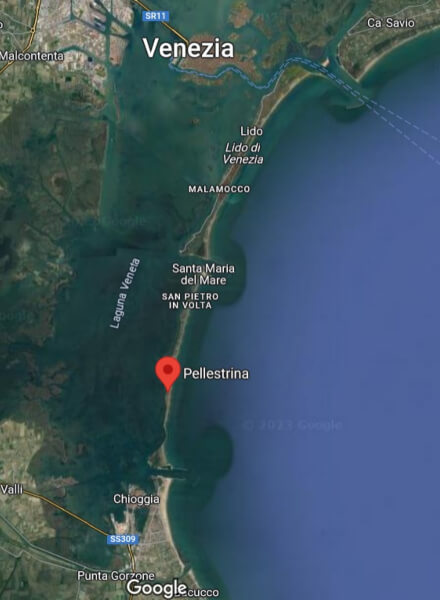
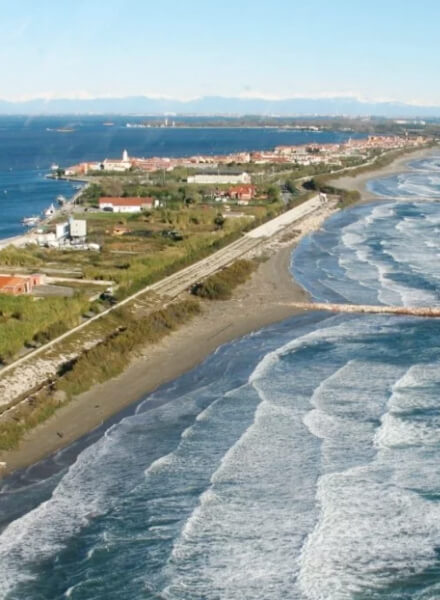
Sights in Pellestrina
This hidden gem in the Adriatic Sea has much to offer visitors wishing to discover its culture, history and natural beauty. From north to south, here are some of the most charming places on Pellestrina island.
The Murazzi
The Murazzi (Muràssi or Muràsi in Venetian), massive breakwaters in white Istrian stone forming a 23-metre-wide dike, were erected by the Venetian Republic to contain the action of the sea.
Divided into three sections – Lido, Pellestrina and Sottomarina – the Murazzi have a fascinating history, but the most spectacular section lies between Pellestrina and Ca’ Roman, where the lagoon and the Adriatic are split by the Strada Comunale dei Murazzi.
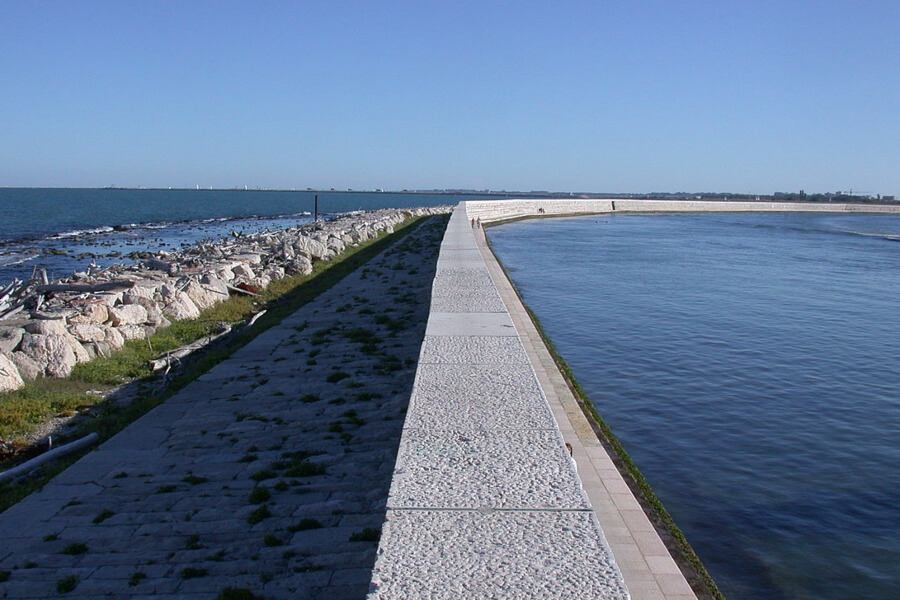
Carrizzada Belvedere
With its stunning views of the lagoon, canals and landscapes, Carrizzada Belvedere is the ideal place for a panoramic walk. This route is beloved by visitors for its quietness and the beauty of the surrounding nature, allowing them to admire the local flora and fauna and to immerse themselves in the fishermen’s and locals’ everyday life.
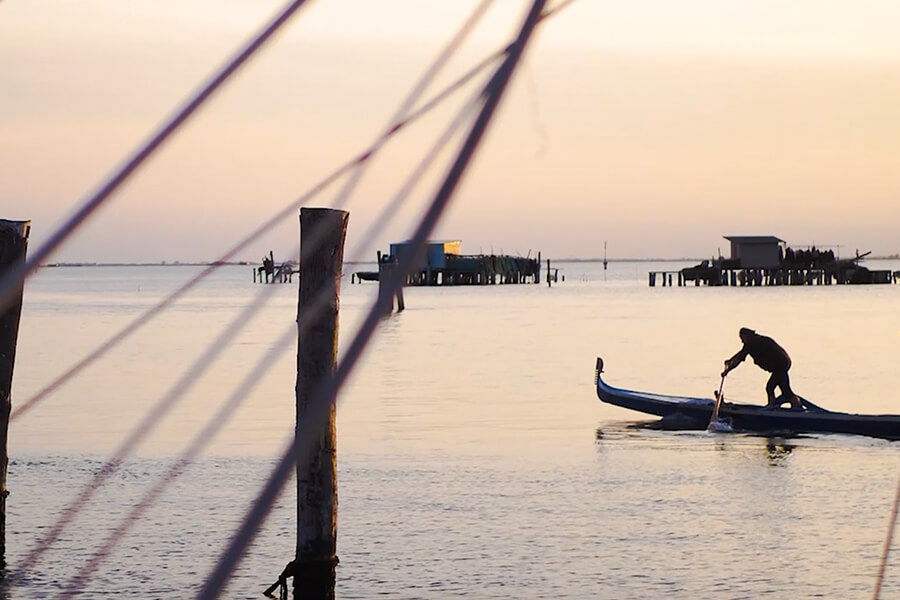
St. Peter the Apostle Church
St. Peter the Apostle Church, a fascinating Catholic place of worship, dates back to the 17th century and features an architectural style typical of Venetian churches. Inside the church are numerous works of art, including paintings and sculptures by local artists.
Piccolo Museo della Laguna Sud
Piccolo Museo della Laguna Sud, the „Little Museum of the Southern Lagoon”, a precious treasure of the island, was founded in 2007 with the aim of preserving and documenting the history, culture and traditions of the local communities. Through exhibitions, historical items, photographs and documents, visitors can immerse themselves in the customs and traditions of fishermen’s life who have lived along the shores of Pellestrina for centuries.
Church of Portosecco
St. Stephen’s Church, the patron saint of Portosecco, is one of the most important places of worship on the island and plays an important role in the religious and cultural life of the local community.
The earliest records, dating back to the 12th century, tell of a small chapel on an island of the lagoon; over the centuries, however, the building has been renovated and rebuilt several times and is now a little gem in the heart of the colourful Pellestrina village.
St. Anthony’s Church
Founded in 1612 as a simple chapel, St. Anthony’s Church is dedicated to the patron saint of Padua, one of the most beloved saints of the Catholic religion.
The high altar, an 18th century masterpiece in neoclassical style with red and white marble, still fascinates tourists from all over the world because of its refined beauty.
Ca’ Roman Nature Reserve
The beautiful Ca’ Roman Nature Reserve is one of the last unspoiled areas in the lagoon and plays a central role in preserving local biodiversity.
Despite its small size, the nature reserve encompasses a variety of ecosystems, including wetlands, sand dunes, groves and marshes, which provide an ideal habitat for a wide range of plants and animals, including some rare and endangered species.
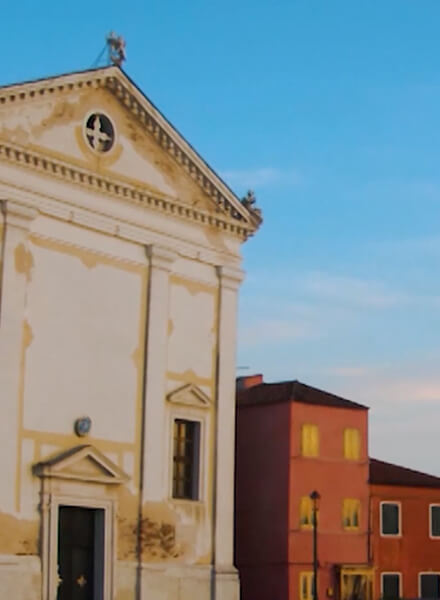
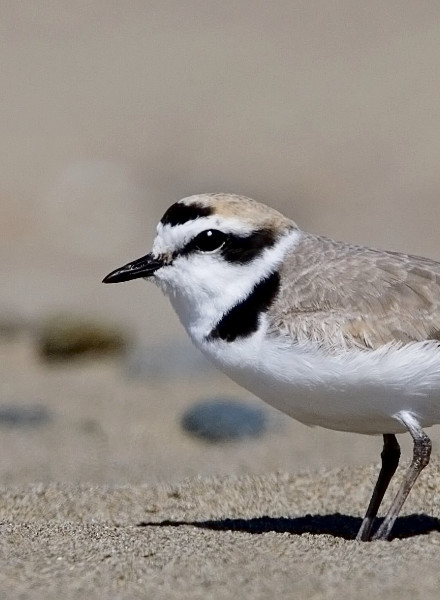
Sanctuary of Madonna dell’Apparizione
The fascinating history of the Sanctuary of Madonna dell’Apparizione dates back to 1716, when the Virgin Mary is said to have shown herself to a local boy. This episode prompted the Bishop of Chioggia, Giovanni Soffietti, to start Sanctuary building in 1718.
Although partially demolished due to two fires in the 19th century and in 1901, the Sanctuary was restored in the early 20th century to look as it does today.
The Pellestrina lace
Pellestrina is known not only for its enchanting sights, but also for an ancient and fascinating handicraft tradition: lace-making, particularly bobbin lace, made entirely by hand, using only a padded cushion and thin cotton threads.
The history of Pellestrina lace has its roots in past centuries, and it is said to have been introduced to the island by Benedictine monks. Over time, however, the locals perfected this manufacturing technique, handing it down from generation to generation and transforming it into a craft tradition of inestimable cultural value.
Even today, lace-making is protected and promoted – both nationally and internationally – through dedicated fairs, exhibitions and workshops.
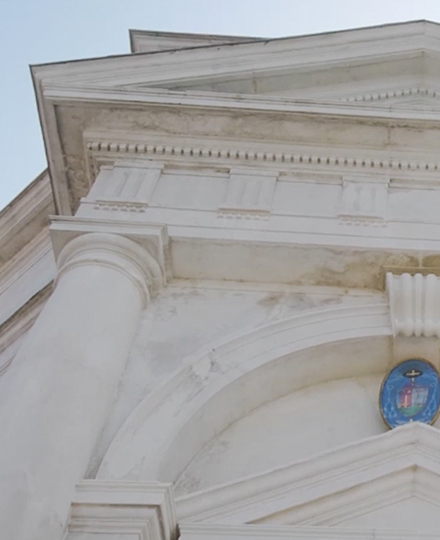
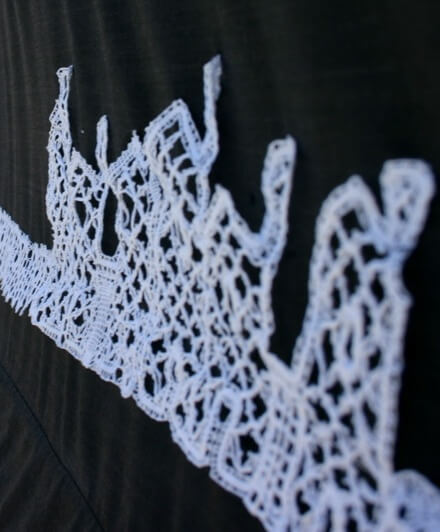
Summer festivals in Pellestrina: a time for joy and tradition
Pellestrina’s summer festivals represent a moment of sharing for both the local community and visitors. During the summer season, the island comes alive with various events and cultural happenings that celebrate the island’s centuries-old traditions.
Among the most cherished festivities, the feast of the Madonna dell’Apparizione – in memory of the Virgin’s apparition in 1716 – is celebrated every year on 4th August, with folk dancing, regattas on the lagoon and food stands delighting visitors with Venetian gastronomic delicacies.
Another special moment for the community of Pellestrina is the feast of Santo Stefano, which usually takes place in the first weeks of August. For this occasion, the island is decorated with garlands and flags and people celebrate the saint with music, games and typical delicacies.
How to get to Pellestrina
You can reach Pellestrina by travelling on ACTV’s vaporetto line 11, which directly connects Chioggia and Venice Lido and offers an amazing journey across the lagoon.
Alternatively, you can take the bus line 11 from Piazzale Santa Maria Elisabetta (Venice Lido) to Alberoni and from there the ferry to Santa Maria del Mare, located at the northern end of Pellestrina.
On the other hand, if you prefer to get to the island by your own vehicle (car, motorbike, bicycle), you can drive on your own to Alberoni and from there take ferry line 11 to Santa Maria del Mare.
But how to get to Pellestrina from Camping Ca’Savio? Getting there will be child’s play! Just take the bus from the campsite bus stop to the Punta Sabbioni bus station (line 23A, 23B, 95 or 96), from there take the vaporetto line 14 towards Lido S.M.E. and from Piazzale Santa Maria Elisabetta continue with bus line 11 towards Pellestrina.
It’s easy, isn’t it? Here is a video to make your journey even easier.
Where to stay when visiting Pellestrina?
As Pellestrina is easily accessible by sea, it is also possible to overnight in its surroundings.
Camping Ca’ Savio in Cavallino Treporti is the ideal place for those who want to enjoy the quiet and nature of the lagoon as well as the many sights nearby such as Venice, Burano, Murano and of course Pellestrina itself.